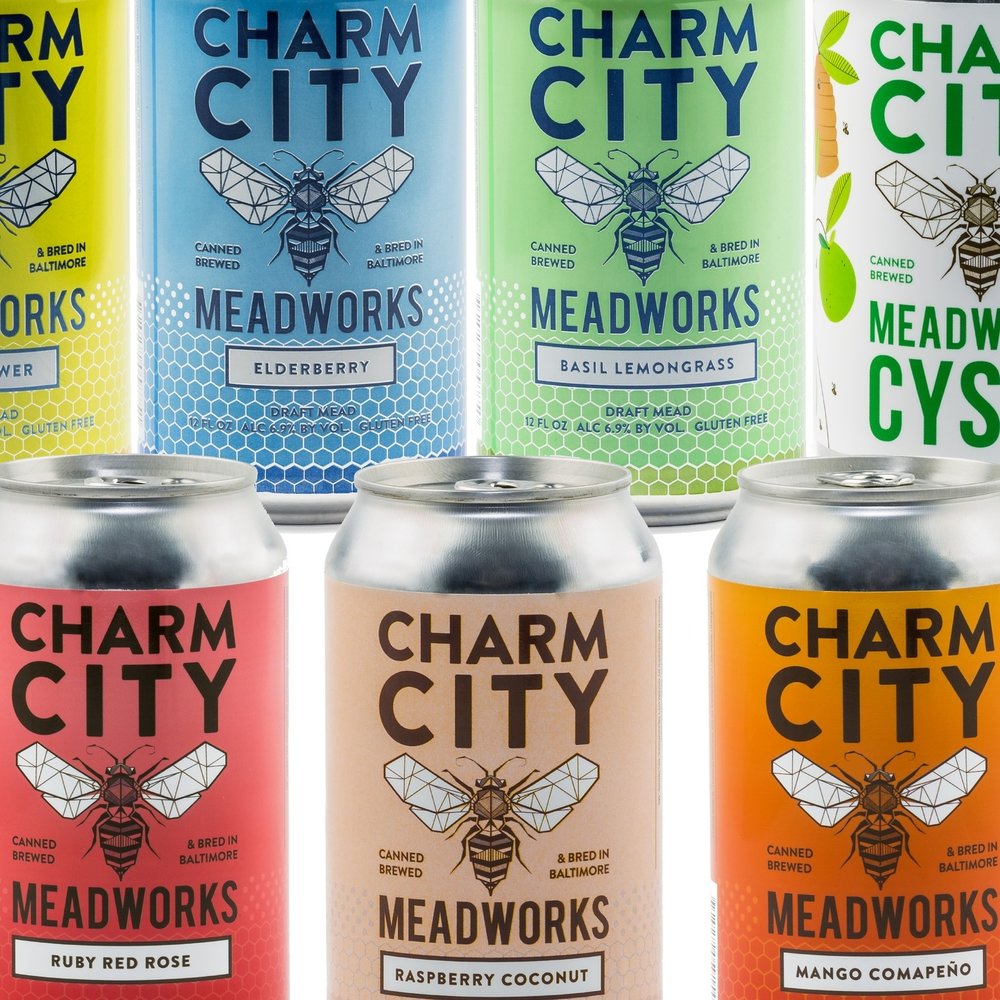Start 14-Day Trial Subscription
*No credit card required

An Introduction to Mead
What Goes Into Mead Fermentation & Production, And How Are The Varied Styles Of Mead Defined?
Craft mead ranks as a hot new trend in the alcohol industry, but few imbibers truly understand and appreciate the complexities and defining characteristics of this historic, legendary beverage. How does mead differ from wine, cider and beer? What goes into mead fermentation and production, and how are the varied styles of mead defined?
How Is Mead Different from Beer, Wine & Cidar ?
Wine is fermented from grape or fruit juices. Beer starts with converting the starch of barley grains into fermentable sugars using a hot water infusion, then boiling the sweet liquid with hops to balance the sweetness. Cider basically arises from fermented apple juice. With mead, honey makes up most of the fermentable sugar, and the final alcohol-by-volume (ABV) content can range from around 3 percent to over 20 percent, depending on the style.
Robin Kosoris of Georgia's Viking Alchemist Meadery believes that mead innovation is only limited by the imagination of the mead maker. “Like wine, mead has terroir,” she says. “Wildflower honey is the ‘bees’ choice’ of local flowers and has a distinctiveness based on location as well as time of year. Like beer, mead has a wide variety of styles and lends itself well to creativity.”
When Was Mead Invented?
Millennia ago, water soaked into a damaged beehive, or maybe rain, diluted a container of honey that was left out in the elements. The watery honey fermented from microbes found in the environment, and some calorie-deprived soul drank the resulting liquid and found it to be delicious and delightfully intoxicating. Early mead production was going on almost 10,000 years ago, based on residue found in ancient Chinese pottery, and for thousands of years, this “nectar of the gods” was probably the favorite alcoholic drink in the world.
How is Mead Made?
Honey, water and yeast are essential in the creation of mead, and the final product can fall on a carbonation spectrum from zero carbon dioxide (still) to lively and sparkling like champagne. Depending on the amount of residual sugar at packaging, meads are available in versions that can be described as dry, semi-sweet or sweet. Dry meads make for splendid aperitifs, while sweet meads pair well with desserts.

With mead, honey makes up most of the fermentable sugar, and the final alcohol-by-volume (ABV) content can range from around 3 percent to over 20 percent, depending on the style.
Bees collect nectar and pollen from surrounding flowers and convert this mixture into honey in the hive. Mead’s major flavors come from the type of honey that is used, and different flowers give rise to honeys with a surprising array of aroma and flavor characteristics. Most standard, mixed blossom honeys produce meads with appealing, neutral flavors. Orange blossom honey contributes a pleasing hint of citrus. Tupelo honey can produce meads with somewhat earthy undertones, while an unusual honey type such as eucalyptus offers notes of pungent menthol.
What is Mead Attributes?
In general, all meads aspire to be brilliantly clear, with colors that range from almost colorless to dark brown, based on the color of the honey. Most meads fall in the straw to golden spectrum. Aromas are indicative of the base honey type, with some fruity esters and spice-like compounds arising from the fermentation process. Higher ABV meads offer a greater depth of honey flavor than lighter session versions, and sweeter meads provide a more viscous, full-bodied mouthfeel.
The Beer Judge Certification Program (BJCP) mead guidelines explain, “Dry meads will have no residual sugar, sweet meads will have noticeable to prominent sweetness, and semi-sweet meads will have a balanced sweetness. In no case should the residual sweetness be syrupy, cloying or seem like unfermented honey.”
Looking through the BJCP style descriptions makes it immediately apparent that mead is no simple beverage. An impressive range of mead varieties can be created from additions of fruit, spices, herbs, hops, vegetables and malt. “Honey is the defining element of a mead,” notes Jeff Herbert, owner of Superstition Meadery in Arizona. “While honey makes a delicious mead on its own, it has the amazing ability to elevate the profile of special ingredients.”
As mentioned earlier, classic, traditional meads – made with only honey, water and yeast – are built to showcase the type of honey. Mead producers shoot for an enjoyable, appealing, balanced combination of honey, alcohol, acidity and fermentation complexity, all based on the body and sweetness level that are appropriate for the particular style. Dry meads can be reminiscent of a Sauvignon Blanc, while sweeter examples may taste like Sauternes or Riesling dessert wines.
Fruit additions create meads known generally as “Melomels.” These exquisite meads can be dry to sweet, with the type of fruit being apparent and well-balanced with the underlying canvas of honey. Creative, modern melomel producers choose from an interesting range of fruits that can include berries, stone fruits, figs, exotic fruits, citrus and more. BJCP descriptions use the culinary, not botanical, definition of “fruit.” For example, a jalapeño pepper is technically a fruit, but its culinary reputation classifies it as a vegetable. Some fruit meads may also contain one or more complementary spices for added complexity.
Melomels made with apples or apple cider are called “Cysers,” with lower-ABV versions tasting like sessionable hard cider and strong examples paying homage to cellared apple brandy. The BJCP suggests, “A good tannin-sweetness balance is desired in a Cyser, though very dry and very sweet examples do exist.”

“Honey is the defining element of a mead,” notes Jeff Herbert, owner of Superstition Meadery (bottles pictured above) in Arizona. “While honey makes a delicious mead on its own, it has the amazing ability to elevate the profile of special ingredients.”
Pyment is a melomel fermented with a blend of grape juice. Like wine, hues can range from straw to red. Exceptional examples provide a mouth-watering balance of honey and varietal grape, with interesting tannin notes for complexity. Barrel-aging makes for an exciting option, usually with stronger red pyments, and the resulting blend of wood tannins and vanilla notes tend to make the mead seem a bit more dry and wine-like.
Another BJCP category allows for additions of culinary-defined “spices, herbs or vegetables.” Once again, the added ingredients should be noticeable, distinctive and well-balanced with the honey’s sweet-acid-tannin-alcohol character in the mead. No spice, herb or vegetable component should be too understated or overwhelming. Look for meads in this category that are jazzed up with the likes of cinnamon, nutmeg, clove, rosemary, rose hips, ginger, rhubarb, hot peppers, coffee, cocoa nibs, nuts, coconut, hops, tea and chocolate. Meads containing culinary spices or herbs are also known as a “Metheglins.”
How about a fusion of mead and beer? Braggots are meads made with honey and malt, and this category showcases a wide range of flavors, colors and optional hop character – based on the base beer style and variety of honey. Beer and honey profiles should work hand-in-hand and come across as pleasing, balanced and identifiable as a combination of beer and mead.
Historical, experimental and indigenous meads exist that don’t really fit into a subcategory. Ethiopian Tej, historic Polish meads, acidic Oxymel and maple-like Acerglyn are just a few examples that are worthy of research.
Michelle Spohnheimer, owner of Buzzed Bee Meadery in Iowa, adds, “Mead is a unique craft beverage that’s appealing to a wide variety of people. Many of our customers who appreciate the craft beverage industry are excited to make mead a part of their drinking profile. The amazing variety of flavors and styles of mead keep people coming back for continued exploration of this remarkable beverage.”

Images courtesy respective meaderies



